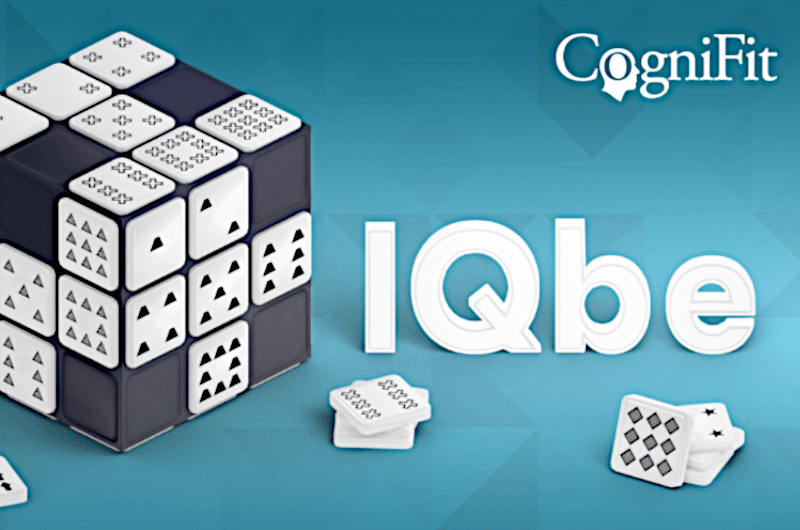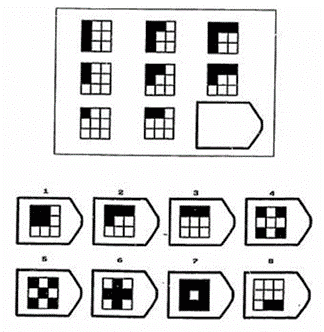
IQbe Game – Push Your Brain With Patterns
The IQbe game isn’t like anything you’ve played before. While most CogniFit games have a certain “feel” to their level progression, this one is highly simplified in that aspect. However, don’t let that fool you. Every new spin of the cube gets harder and harder.
Let’s take a look at this game, what you can expect, and what areas of the brain are being stimulated while you play.
Will you get to be number 1?
If you are able to complete all ten tests in one sitting, you will be ranked according to the number of correct answers you got and the time it took you to give those answers. Try to do it as accurately and as fast as you can to reach the first place! Will you be able to do it?
Rank 1 is reserved for those users who are above 85% of the population and who are able to complete all IQbe tests with high accuracy and speed.
In the IQbe game you will have no time limit to answer the 10 cubes, but you will have to be fast if you want to gAet the best score.
What is IQbe?

If you’ve ever taken an IQ test, you might have noticed that some of the questions use patterns. It was this aspect that the CogniFit team used for the game.
When you load IQbe, you’ll get a quick tutorial on how to spin the 3D cube. You’ll quickly notice that there are some sections missing. On the right, you’ll have several options. All you have to do is click the one that you feel completes the “pattern puzzle.” That’s it.
However … and yes, you saw this coming …
Things don’t stay easy for long.
Sometimes two pieces will be gone. Other times it will be a corner section and you’ll have to solve for three spaces. And, after you make your choice, you get NO indication if you made the right one or not. And this is entirely on purpose.
There are ten levels. And each level gets harder and harder (with more pattern “rules” put in place to make you think more).
Now, other games might make you feel like you have to race against the clock. However, if it comes down to having a quick solve time versus choosing the right answer, the latter is the most important. So, when it comes to IQbe, it’s 100% okay to take your time! A quick confirmation with the development team told this writer that 4+ minutes is average.
After ten rounds, you’re given a range score that tells you if you’re average or above, etc.
So, don’t let frustration get the better of you. If the patterns seem daunting, just think of how much flexing your brain is doing – and that’s fantastic!
That being said, let’s look at what you’re exercising.
Planning
You’re probably thinking about something along the lines of planning your next vacation or how you’re going to tackle your next work task. And, well, you wouldn’t be wrong.
However, when it comes to cognition, Planning is actually a vital part of our “Executive Functions” which let us choose any necessary steps to achieve a goal (as well as organize them in the right order, assign each a cognitive resource, and then create an overall plan to get all of this done.)
This ability is crucial in our everyday lives. When we have problems with Planning, we can have issues such as…
- Difficulty foreseeing the consequences of our actions
- Problems making decisions
- Being unable to set aside the right amount of time to finish a task
- Finishing something slowly or carelessly
- Being unable to do more than one thing at a time
- Not doing well with surprises
- Low productivity in work or personal life
Even if we don’t have problems in the “Planning” department, exercising this cognitive ability will strengthen all of the underlying skills.
Spatial Perception
You take for granted that you were able to reach out and grab your phone to read this article. Or pull up your chair to the desk, etc.
However, when we interact with our environment (sometimes called “exteroceptive processes”) and then with ourselves (interoceptive processes), we are using a key brain function called Spatial Perception.
Essentially, using our eyes and our haptic system (physical touch and feelings), we have the ability to understand our environment in 3D. We can understand sizes, shapes, distances, etc. We are able to look at a map and transfer the concept into a 3-dimensional idea and compare it to the world around us.

Working Memory
A lot of people wish they could have better memory. They walk into a room and forget what they were looking for, or they meet someone and immediately forget their name. And, sometimes, it can be a bit scary when we can’t hold onto information as long as we need to.
However, there is good news … we are all limited in this department.
Yep! That’s right!
When it comes to Working Memory, any human brain can only hold so much (and for a short period of time). In fact, the entire purpose of this brain function is to hold and manipulate information for a temporary amount of time. After that, it either finds its way into long-term memory or it’s forgotten.
This function is always active and updating itself but can only store about 5-9 “elements” at a time. Like when we try to remember a phone number, the more numbers, the harder it is.
What we really need this cognitive ability for is so we can carry out present tasks – things like holding a conversation with more than one person or quickly adding up if we have enough money to pay for something. Because, after the task is over, we usually don’t need all the information that was being zipped through our brains (e.g. you don’t need to remember that your groceries yesterday cost $15.98.
Since Working Memory is part of decision making, and decision making is part of our Executive Functions (mentioned earlier), if we have problems in this department, it can seep into other areas of our life. Also, things like ADHD, dyslexia, schizophrenia, and dementia can hamper this ability too.
IQbe – An Intelligence test-like game!
Do you think you are smart enough to get rank 1?
Complete the 10 IQbe incremental difficulty intelligence cubes to find out if your performance falls within our top three ranks.
More about IQbe?
The IQbe is a challenging game is based on a digitized manipulative nonverbal fluid intelligence test, with a very low cultural load. The objective of the activity is to complete the model cube by identifying which of the pieces shown on the screen match the correct pattern.
To complete the IQbe it will be necessary to rotate the cube in order to locate the missing pieces and decipher the patterns of elements drawn on the surrounding pieces. Once the patterns have been deciphered and the missing pieces have been discovered, it will be necessary to select that set of pieces among the options shown.
First you will have to locate the missing pieces and then you will have to choose the correct answer.
What makes IQbe unique?
The IQbe has a number of features that make it a very accessible and challenging activity:
- Being based on an intelligence test, the objective of the IQbe will be to present a highly complex challenge to test your ability.
- The IQbe specifically challenges your fluid intelligence, which refers to our ability to think logically and solve problems. Its counterpart would be crystallized intelligence, which refers to the body of knowledge we acquire throughout our lives, although it is outside the scope of this test.
- It is a non-verbal game, since the instructions and the game itself do not contain any text, nor is linguistic knowledge necessary to solve it. Thus, it is possible to apply it to people of any language, who have language problems, or who have not acquired reading skills, etc.
- It is a manipulative game, since in order to be completed it is essential that the user interacts with the test stimuli, rotating them and using your hands to carry it out.
- The IQbe is a 3D game, since part of the challenge of the game will be to manage properly through the different faces of the cube.
- The IQbe is presented in a digitalized format, which allows an easy application from a computer, tablet or smartphone with internet connection.
- In addition, the IQbe has a low cultural load, which makes it suitable for migrants from different cultures who are not familiar with the basics of the culture in which they find themselves. The IQbe has other advantages, such as the fact that color and sound are not relevant variables for the resolution of the cube, making it inclusive for people with color vision difficulties or hearing problems.
- It is based on the classic and widely validated Raven’s Standard Progressive Matrices test (1938), in which a series of figures with a missing element were presented on a piece of paper and, below, the user had to identify which of those shown was missing.
IQbe End Thoughts
At the most basic levels of the IQbe, deciphering the rules implicit in the cube stimuli will be relatively simple, but as we advance through the 10 cubes presented by the IQbe, it will become more complicated.
In addition, IQbe has a total of 500 different cubes, allowing you to play and replay the game as many times as you want!
The position of the missing pieces, the type of ruler, the stimuli and their parameters will vary from one cube to another. Will you be able to master each version of IQbe?
IQbe Conclusion
This can be a refreshingly different game if you want something outside the usual brain game choices. And, it’s important to remember that, in this case, the most important thing is the quality of the answer, not how fast you finish! Want to give it a try?
Disclaimer: CogniFit’s cognitive training and assessment tools are designed to promote cognitive stimulation and mental engagement. They are not intended to diagnose, treat, or prevent any medical condition. All information presented here is for educational and informational purposes only and should not replace professional healthcare advice.
The information in this article is provided for informational purposes only and is not medical advice. For medical advice, please consult your doctor.














